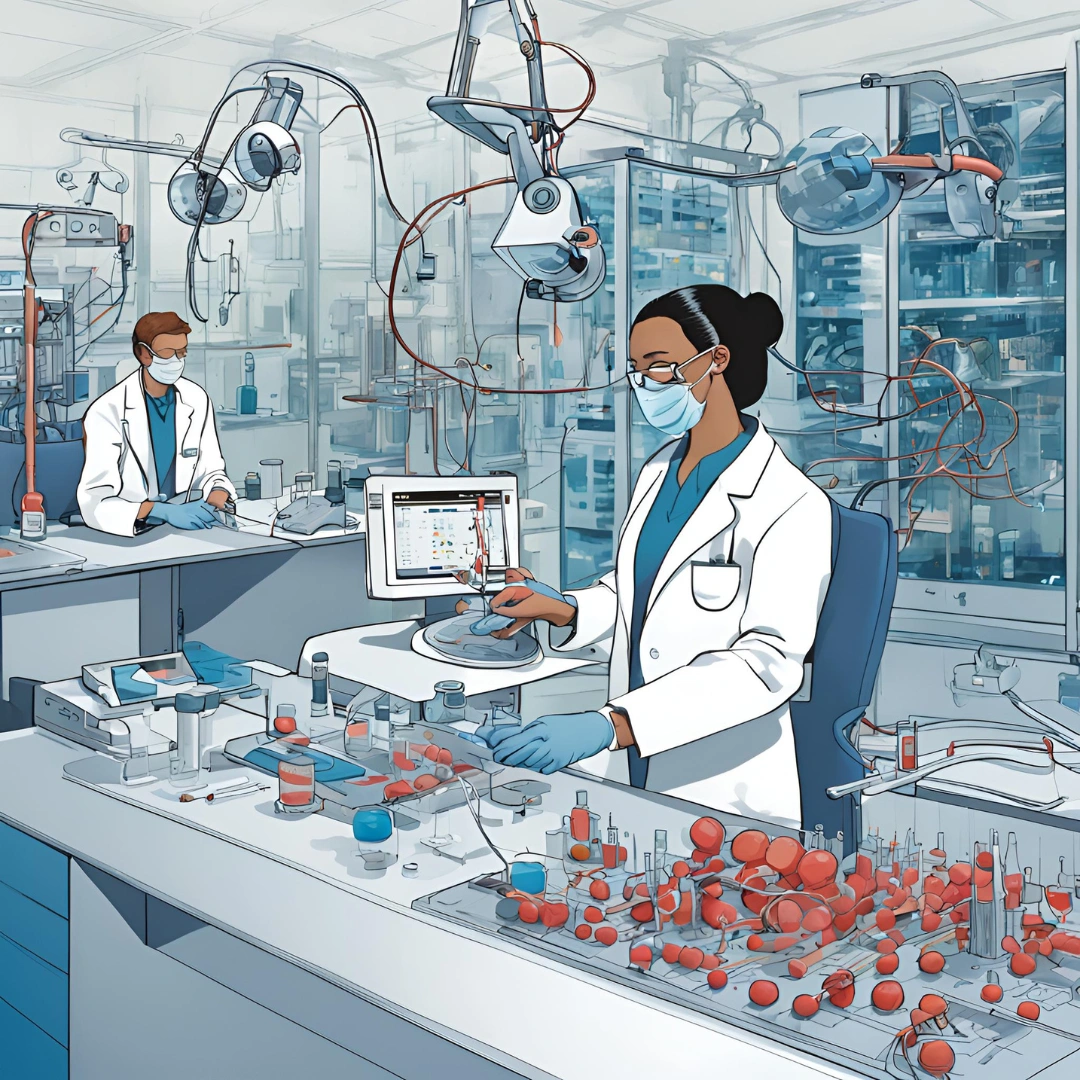Leading the way in scientific innovation, the domains of biotechnology and genomics are bringing about revolutionary shifts in healthcare, agriculture, environmental conservation, and other areas. By utilizing genetic data and biological systems, these technologies can increase crop yields, create novel medicines, and tackle some of the most important problems of our day. We shall discuss the fundamentals of biotechnology and genomics, significant developments in these domains, their applications, moral implications, and future prospects in this blog.
Understanding Biotechnology and Genomics
Biotechnology entails using live things or parts of them to create technology and products that make life better for people. In order to alter biological systems for many purposes, this interdisciplinary field brings together computer science, chemistry, biology, and engineering.
Genomics focuses on the composition, evolution, and mapping of genomes in this field of biology. An organism's whole collection of DNA, comprising all of its genes, is called its genome. Understanding an organism's genetic makeup and how genetic differences affect characteristics and illnesses is the goal of genomics.
Key Components:
-
DNA Sequencing: figuring out the exact nucleotide order in a DNA molecule. Significant breakthroughs have been made in this technology, which is essential to genomics and has made sequencing faster and more inexpensive.
-
Genetic Engineering: direct genetic modification of an organism through the use of biotechnology. Scientists can precisely modify genes with tools like CRISPR-Cas9.
-
Synthetic Biology: a multidisciplinary area of biotechnology where new biological components, tools, and systems are designed and built. The goal of synthetic biology is to develop creatures with unique roles.
Key Advancements in Biotechnology and Genomics
-
CRISPR-Cas9 Gene Editing:
-
Overview: A groundbreaking gene-editing technique called CRISPR-Cas9 makes it possible to precisely and specifically alter the DNA of living things. It targets particular DNA sequences with a guide RNA and cuts the DNA with the Cas9 enzyme to add, remove, or modify genetic information.
-
Applications: Research, healthcare, agriculture, and environmental preservation all make use of CRISPR. It has the potential to treat genetic illnesses, create crops resistant to disease, get rid of pests and invading species, and more.
-
-
Next-Generation Sequencing (NGS):
-
Overview: DNA sequencing is now much less expensive and takes much less time thanks to NGS technologies. The accurate and speedy sequencing of whole genomes is made possible by these high-throughput techniques.
-
Applications: NGS is utilized in evolutionary biology, cancer research, customized medicine, and medical diagnostics. It makes it possible to identify genetic alterations linked to diseases and conduct thorough genomic investigations.
-
-
Personalized Medicine:
-
Overview: Personalized medicine adjusts medical care to each patient's unique needs and preferences. Genetic data can be used by medical professionals to create more specialized and successful treatments.
-
Applications: Genetic testing can determine a person's genetic susceptibility to certain diseases, forecast how they will react to particular medications, and advise preventative steps. The field of personalized medicine is revolutionizing the treatment of cancer by customizing medicines to the unique genetic makeup of each patient's tumor.
-
-
Biopharmaceuticals:
-
Overview: Pharmaceuticals made with biotechnology are known as biopharmaceuticals. These consist of nucleic acids, proteins (like antibodies), and live cells utilized in medical or diagnostic procedures.
-
Applications: Numerous illnesses, such as cancer, viral diseases, and autoimmune diseases, are treated with biopharmaceuticals. Gene treatments, vaccinations, and monoclonal antibodies are a few examples.
-
-
Agricultural Biotechnology:
-
Overview: Using genetic engineering and other biotechnological techniques, agricultural biotechnology aims to increase crop yields, disease and pest resistance, and nutritional value.
-
Applications: Crop resilience and production are increased by the introduction of genetically modified organisms (GMOs). Crops resistant to drought, plants resistant to pests, and foods fortified with bioflora to compensate for dietary deficits are examples of innovations.
-
Applications of Biotechnology and Genomics
-
Healthcare:
-
Gene Therapy: fixing faulty genes to treat genetic diseases. Successful treatments for ailments including spinal muscular atrophy and some types of hereditary blindness have been made possible by recent developments.
-
Cancer Genomics: figuring out which genetic alterations cause cancer and creating tailored treatments. Genetic data is used by precision oncology to inform therapy choices.
-
Infectious Diseases: creating vaccines and medical equipment. For example, the quick creation of COVID-19 vaccines and the comprehension of virus changes were made possible by genome sequencing.
-
-
Agriculture:
-
GMOs: producing crops with improved qualities, like resistance to pests and herbicides, and higher nutritional value. Golden rice and Bt corn are two examples.
-
Animal Biotechnology: enhancing the productivity and health of animals. Cloning, genetic engineering, and selective breeding are among the methods.
-
Sustainable Farming: utilizing biotechnological techniques to create ecologically friendly agricultural techniques, like biofertilizers and biological pest control.
-
-
Environmental Conservation:
-
Biodiversity Monitoring: employing genetic technologies to research and track ecosystems and wildlife populations. This supports conservation initiatives and the comprehension of the effects of environmental changes.
-
Bioremediation: using microorganisms to remove pollutants from the environment. Bacteria using genetic engineering have the ability to break down contaminants including heavy metals and oil spills.
-
Conservation Genetics: utilizing genetic data to protect threatened animals. In order to avoid inbreeding, this also involves genetic diversity studies and breeding plans.
-
-
Industrial Biotechnology:
-
Biofuels: Producing renewable energy sources from biological materials. Innovations in bioengineering are improving the efficiency and sustainability of biofuel production.
-
Bioplastics: Developing biodegradable plastics from renewable resources. Bioplastics offer a sustainable alternative to traditional petroleum-based plastics.
-
Biomanufacturing: Using biological systems to produce chemicals, materials, and pharmaceuticals. This includes fermentation processes and the use of engineered microbes.
-
Conclusion
A scientific revolution powered by biotechnology and genomics has the potential to revolutionize a wide range of industries, including healthcare, agriculture, environmental conservation, and more. These disciplines use genetic data and biological systems to create novel responses to some of the most important problems facing humanity today. Even though the improvements are immensely beneficial, the proper development of these technologies depends on resolving ethical issues and guaranteeing fair access. Biotechnology and genomics will surely be key players in creating a future that is healthier, more sustainable, and technologically sophisticated as long as research and innovation continue to improve.





Leave a Reply